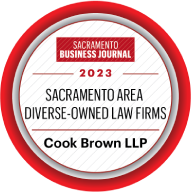Originally published for HR California
A recent Ninth Circuit decision allows a former employee to proceed with her Americans with Disabilities Act (ADA) discrimination claims despite working for an employer with fewer than 15 employees. In this case, the employee worked for a Nevada limited liability partnership, which also had a California partnership run by the same two lawyers who were licensed to practice in both states. The court held that whether the employer was an “integrated employer” could be decided at trial (Amy Buchanan v. Watkins & Letofsky, LLP, 2022 U.S. App. LEXIS 9338).
This ruling means that employers who previously would not have met the threshold requirement for ADA applicability — that they have 15 or more employees — could now be exposed to potential ADA claims if they form an integrated enterprise.
The Integrated Enterprise Test and the ADA
The integrated enterprise test is aimed at allowing courts to consider two possible employers as a single entity. Generally, the ADA only applies to employers with 15 or more employees. However, if one employer is so interconnected with another employer that the two form an integrated enterprise and the integrated enterprise collectively has at least 15 employees, employees can bring ADA claims against an employer using the integrated enterprise doctrine.
Courts use the following four factors to determine whether two entities are an integrated enterprise:
- Interrelation of operations;
- Common management;
- Centralized control of labor relations; and
- Common ownership or financial control.
Most courts have made clear that no single factor determines whether an entity is an integrated enterprise.
Integrated Enterprise Test Factors
Here’s how the court broke down the four integrated enterprise test factors in this case.
Interrelation of Operations
The plaintiff demonstrated that the two law offices shared a website and toll-free phone number and employees of both offices used the same email template footer which identified both offices. Additionally, both offices shared operational and administrative work, an IRS taxpayer identification number, and an employee roster.
Common Management and Centralize Labor Relations
The court focused on who managed all significant employment matters, including hiring and firing of employees, employee discipline, performance evaluations, scheduling, and compensation. The same two managing partners who ran both the California and Nevada offices did all of this.
Common Ownership or Financial Control
This factor addresses whether a plaintiff presents evidence of either “common ownership or financial control,” not necessarily both. While there was no dispute that each office kept separate financial books, they were ultimately owned by the same partners, which raises a clear inference of common ownership and financial control.
Employer Takeaways
California employers should note that the California Fair Employment and Housing Act (FEHA) applies to employers with only five or more employees and provides protections similar to and in many respects more protective than that of the ADA.
To avoid being swept incidentally into the liability of a separate legal entity, employers should:
- Consider reviewing the integrated enterprise factors outlined above to analyze whether they could inadvertently be deemed a single entity with another employer under the integrated enterprise test.
- Take steps to maintain separate operations and ensure day-to-day direction and management are maintained at your office to help defend against claims that two separate legal entities should be integrated for employment liability purposes.

